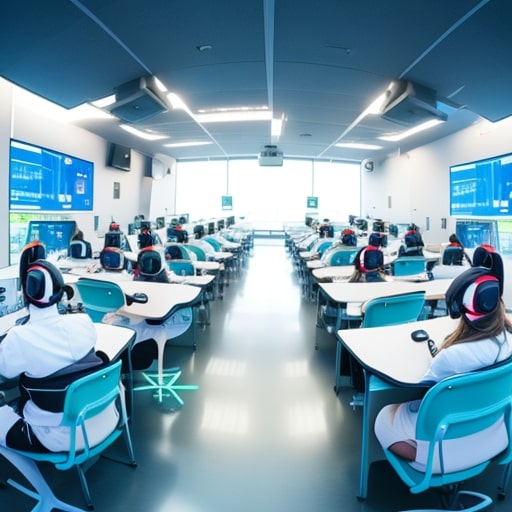Introduction:
As remote learning and digital learning replace traditional classrooms in the digital age, education is undergoing a profound transformation. The concept of education has grown beyond the boundaries of physical venues as a result of technological breakthroughs and the growing connectivity of our globe. This article will examine how distant learning and digital learning are changing the educational landscape, as well as the advantages and difficulties they bring.

1. The Development of Digital Learning: The delivery of educational information using digital technologies, platforms, and resources is referred to as digital learning. Online courses, educational apps, multimedia materials, and virtual classrooms are just a few examples of the many forms it embraces. For students of all ages, digital learning offers flexibility, accessibility, and individualized learning experiences. It enables students to access educational resources whenever, whenever, and at their own pace. Additionally, interactive aspects, gamification, and multimedia are frequently used on digital platforms to make learning more interesting and dynamic.
2.The Advantages of Remote Education: Remote education is the practice of providing instruction to students who are geographically remote from their instructors or educational institutions. Especially in recent years, it has become more well-known as a result of developments in communication technology. There are many advantages to distance learning, including:
a.Accessibility: Students from remote places or underserved communities can now access high-quality education because to the elimination of geographic constraints provided through distance learning. It provides access to education for those who might not otherwise have received it.
b. Flexibility: Pacing and scheduling are both possible with distance learning. In order to accommodate their own obligations or other commitments, students are allowed to learn at their own pace. It gives students the power to take charge of their education and personalize it to meet their needs.
c. Diverse Learning Options: There are many different ways to learn through distance learning. Beyond the confines of a traditional curriculum, students can select from a choice of courses and programs that match their interests and objectives. This diversity encourages the discovery of new topics and cultivates a culture of lifelong learning.
d. Collaboration and Connectivity: Global student and educator connectivity and collaboration are fostered by distance learning. Students can interact with peers from other origins, cultures, and opinions through virtual classrooms, discussion forums, and team projects. Global connectivity improves empathy, cultural sensitivity, and a sense of belonging to the world.

3.Overcoming obstacles
While distance learning and digital learning have many benefits, there are also issues to be resolved.
A effective digital learning experience requires access to dependable internet connectivity, equipment, and technical assistance. In order to eliminate the digital gap and give all kids the same educational possibilities, it is essential to ensure fair access to technology.
b. Digital Literacy and Skills: In order for students to engage in effective digital learning, they must be equipped with digital literacy skills, such as the capacity to use online resources efficiently and cooperate digitally. Along with teaching the fundamentals of academic subjects, educators must emphasize the development of digital literacy abilities.
c. Social Interaction and Engagement: Face-to-face social interaction may be lacking in distance learning environments. In order to combat this, teachers must develop plans that promote online collaboration, promote active involvement, and cultivate a feeling of community inside virtual learning environments.
d. Monitoring and Assessment: It can be difficult to evaluate students’ progress and guarantee academic integrity in distance learning. Teachers must modify their assessment strategies for the context of digital learning and put strong safeguards in place to uphold academic standards.
4.The Future of Education:
The future of education will likely continue to be shaped by the incorporation of digital learning and distance education. We may anticipate more breakthroughs as technology develops, including applications of virtual reality (VR) and augmented reality (AR) in education, personalized learning experiences powered by artificial intelligence, and adaptive learning platforms catered to the needs of specific students. These developments will completely alter the way education is delivered, making it more approachable, interesting, and learner-centered.
Conclusion:
Unprecedented chances to redefine how we learn and teach are presented by the evolving nature of education, which is being fueled by digital learning and distance learning. It gives students freedom, access to a variety of materials, and worldwide connectedness. However, it is crucial to address the issues with technology infrastructure, digital literacy, social interaction, and evaluation in order to fully realize the promise of digital learning and distant education. We can build a future where education is accessible, inclusive, and transformative for everyone by embracing these developments and actively adjusting to the changing educational landscape.
